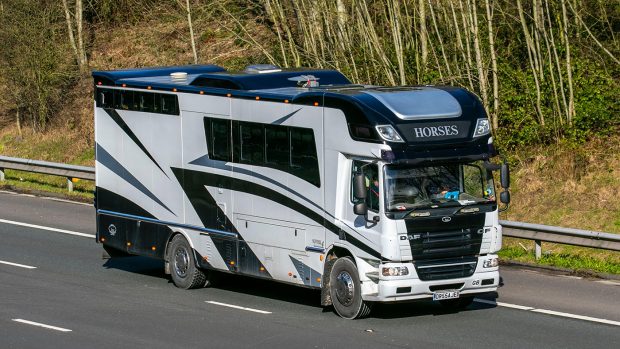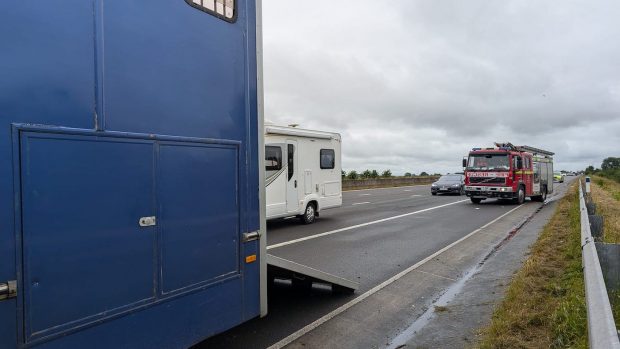If you’re looking at second-hand horseboxes for sale, but aren’t sure where to start, then we are here to help with advice on what to look out for and the right questions to ask, whether you’re buying from a private seller or from a horsebox dealer.
The advantage of buying from a manufacturer or dealer is that they may offer you a warranty on the lorry, even though it is second-hand, but you should check what this covers and how long it last for. Always ask for a written copy of the warranty for your records. Sales will also be covered by the Sales of Goods Act 1979, which offers added protection.
If you are buying from a private seller you have no protection so it would be wise to have any potential purchase checked by an independent horsebox specialist. This will mean spending a little more at the outset, but it could save you thousands in the long-term. And remember that a flashy paint job does not mean that the vehicle is mechanically or structurally sound.
In addition, you should check out the lorry’s history with an HPI check to ensure it hasn’t been written off or has any outstanding finance owing on the vehicle. A full service history is a great thing to have, and is helpful for checking if the mileage is accurate. As many horseboxes have had a life as a lorry before being converted to being a horsebox, a high mileage is not unusual and as long as it is supported with appropriate paperwork to show the vehicle has been well maintained this should not be a problem.
Other basic checks that you should always complete before agreeing to buy a horsebox include checking that the vehicle’s identification details (registration plate, vehicle type, colour, engine type and size, chassis number, etc) match its V5C (log book), the original of which should be available to view.
A lorry with a tilt cab is often more popular as they will be easier for a mechanic to maintain, but older tilt cabs can have a tendency to leak around the seal, so this is something to check. The electrics in the living should run from a separate leisure battery to avoid running down the main battery, and an isolator will prevent the battery from losing change when standing.
If you are looking for a lorry with living, then be honest with yourself about what is essential and what is nice to have. If you are planning to attend numerous stay away shows a year, then you may want living that includes a cooker, fridge, bathroom etc, as well as room to sleep, but remember that this all adds to the unladen weight of the lorry, which then reduces the amount of payload you have for your horses, kit and other essentials (see more below).
Remember to check whether the lorry is setup with hook up if you’re planning to attend stay away shows regularly. For lorries with gas, find out where the gas bottle is located and when the system was last checked by a qualified Gas Safe professional. If your lorry has gas, it is sensible to have a carbon monoxide alarm fitted in the living area, as well as
Understanding lorry weights
Before agreeing to purchase any horsebox, you need to be confident that the lorry, when fully loaded with your horse(s), kit, humans and a full fuel tank will not exceed its weight limit. When a horsebox is described as a 7.5T/5.5T/3.5T that is not the vehicle’s actual weight – or if it is, then you’ve got a problem because that means you can’t legally carry anything inside it.
The lorry without any cargo will weigh less than its maximum gross weight. The difference between its unladen weight and the max gross weight is described as the lorry’s payload. In order to workout how much weight a lorry can legally carry, you need to have it weighed on a public weighbridge. This will give you a certificate for the lorry’s unladen weight and you can then work out how many horses, humans and associated kit you can carry without exceeding the lorry’s legal limit.
It is worth noting that just because a horsebox is advertised as a three-horse box, with partitions and space for three horses, this does not necessarily mean the vehicle can legally carry three horses. This will depend on the weight of the horses and the payload of the vehicle.
The Vehicle and Operator Services Agency (VOSA) has been targeting overweight vehicles, including horseboxes, for some time. If you are found to be driving a vehicle that is overweight, your insurance will be invalid and you may have to offload some weight before being allowed to proceed. You may also receive a fine, points on your licence, possibly a ban from driving or potentially risk even harsher sanctions if it is deemed that you have been driving dangerously.
So when you are viewing a horsebox ask if the seller has a recent weighbridge certificate for the vehicle, and if not we would recommend that you organise to have the vehicle weighed before agreeing to purchase.
Continued below…

Owners ‘putting horses’ lives at risk’ by failing to check horseboxes
NFU Mutual is urging parents to talk to their children about horsebox safety to help educate the next generation about

20 horsebox essentials that you’ll wonder how you ever lived without
Whether you are competing for the day or staying away, we have all the life hacks and useful kit you
Expert tips: viewing horseboxes for sale
Jon Phillips from the Organisation of Horsebox and Trailer Owners offers these helpful tips on what to look out for when viewing horseboxes for sale.
Mechanical checks
- Look for rust, damp patches and any signs of rotting, including on the ramp and floor of the horse area
- Check that the ramp woodwork, hinges and springs are all in good condition and that the ramp can be lifted by one person.
- Check there are no oil leaks from the engine and that the oil light doesn’t come on when the engine is started.
- Make sure the lighting in the living and horse area run from a separate battery to the main vehicle battery.
- Check there is no damage to the tyres and the tread levels are legal.
- In the cab, check the gauges, lights, indicators, wipers, horn and warning lights.
- Check the keys provided fit and work in all the appropriate locks
Road test
- When you arrive check whether the engine is cold, so you can see whether it starts easily
- A road test is strongly advised so that you can get a feel for the lorry and the driving position. Driving the lorry will give you a chance to notice any major faults.
Professional pre-purchase inspection
- If possible try to arrange a professional pre-purchase inspection. Jon recalls a lady telling the examiner that all she could find wrong with her new horsebox was some fraying rubber around the driver’s door. The inspection showed, among other things, that the body was attached to the chassis with just two bolts.
To find out more about the legal implications of buying and driving horse transport, download VOSA’s Guide for Horsebox and Trailer Owners or call the VOSA helpline (tel: 0300 123 9000).
With so many things to consider, it’s worth taking your time over buying a horsebox. Don’t allow yourself to be rushed into agreeing a purchase simply to snap up what looks to be a good deal. And remember that old adage that if something seems to good to be true, then it probably is!




